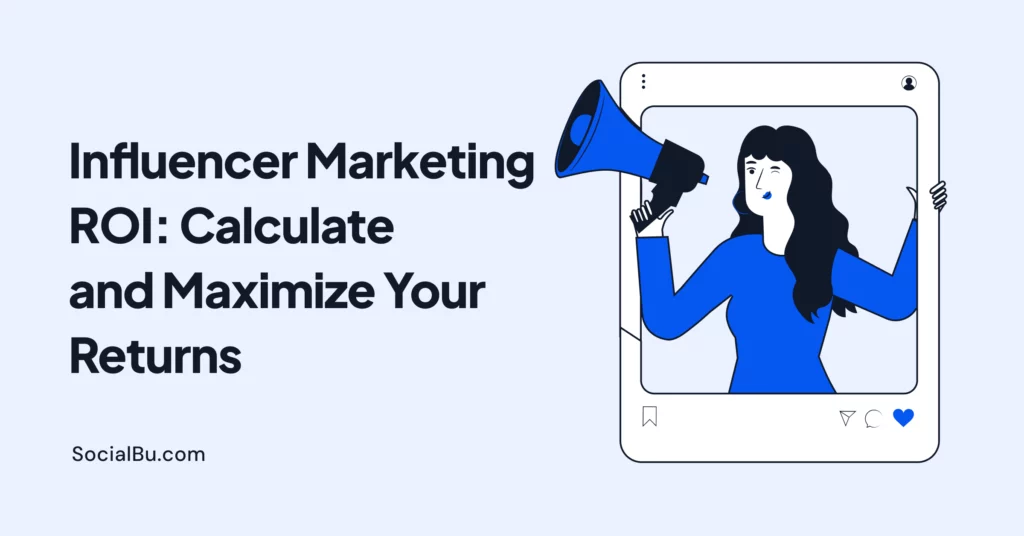Influencer marketing is a major force for brands aiming to reach audiences on social media. With countless creators on platforms like Instagram, TikTok, and YouTube, companies are investing heavily in influencers to drive sales and build trust.
But how do you know if your marketing efforts are paying off? That’s where influencer ROI calculation comes in. It helps you move beyond likes and views to track actual business impact.
Measuring partnership ROI shows whether your campaigns are worth the investment or if you’re wasting money.
In this blog, we’ll explain why ROI matters, which metrics to track, how to calculate it, and how to get the most out of your campaigns.
Why Measure Influencer Marketing ROI?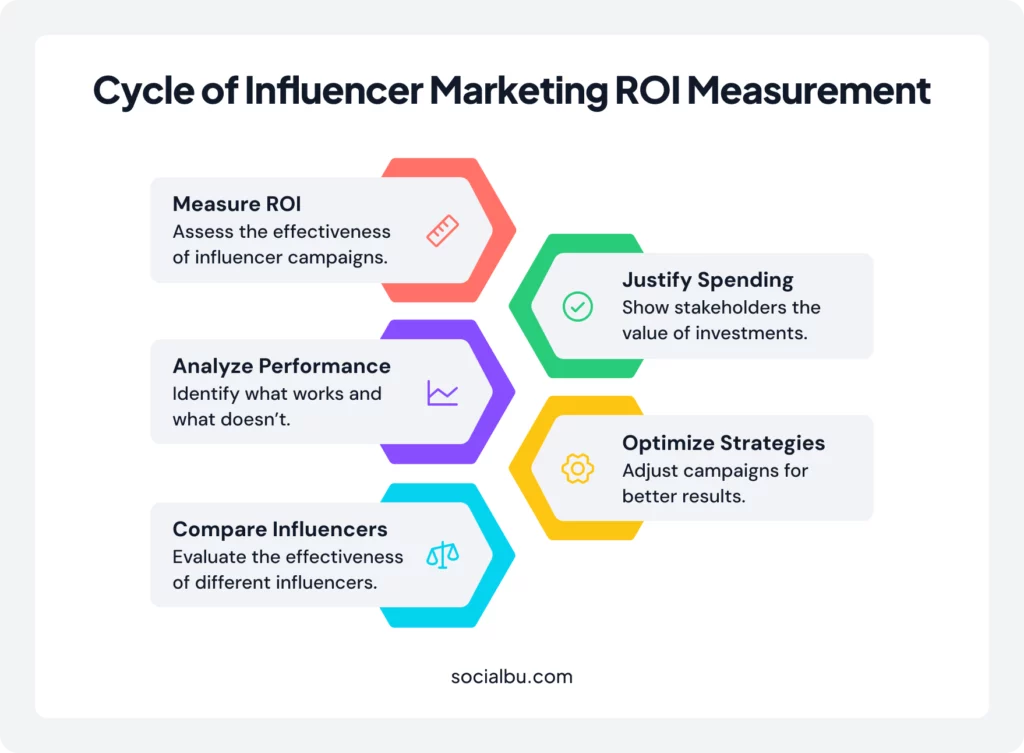
Knowing the partnership ROI of your influencer marketing campaigns isn’t just a nice-to-have—it’s a must. Without it, you’re guessing whether your budget is being spent wisely. Measuring influencer ROI calculation shows you what’s working and what’s not, so you can focus on strategies that drive results. It also helps you justify your spending to stakeholders.
For example, if you’re paying influencers to promote your product, you need to determine whether the cost per engagement or cost-per-acquisition is worth it.
Additionally, tracking ROI enables you to compare micro- and macro-influencers to determine which one delivers better brand awareness or conversions.
Here are some key influencer campaign metrics you should track:
Engagement-Based Metrics
Engagement metrics, such as likes, comments, shares, and saves, indicate the level of interaction your audience has with influencer content. A high engagement rate often indicates that the influencer’s followers trust them, which is crucial for growing your online presence.
The cost per engagement influencer (total campaign cost divided by engagements) is a great way to see if you’re getting value for your money.
Reach and Awareness Metrics
Conversions, like clicks to your website or completed purchases, show the direct impact of influencer marketing. Affiliate tracking links are a game-changer here, as they let you see which influencers drive sales.
Cost-per-acquisition (CPA) measures the amount you spend to acquire a customer, helping you evaluate the efficiency of your campaigns and maximize influencer campaign results.
Long-term Performance Measurement
Some benefits of influencer marketing, such as brand loyalty and repeat customers, emerge over time. Influencer performance measurement should include tracking follower growth, repeat engagement, and long-term brand awareness.
How to Calculate Influencer Marketing ROI
Calculating influencer ROI is simple if you follow these steps. It’s all about comparing what you spend to what you earn or gain.
Step 1: Identify Campaign Costs
To identify costs, add up everything you spend on the campaign: influencer fees, content creation costs, ad spend, and tools like SocialBu. This includes both direct and indirect expenses, such as platform subscriptions, boosted post fees, and even time allocated by your internal team.
Step 2: Measure Revenue or Value
Next, figure out what the campaign earned. This could be direct sales from affiliate tracking links, new leads, or even the estimated value of brand awareness lift. If an influencer’s post drives $2,000 in sales through tracked links, that’s your revenue.
Step 3: Apply the ROI Formula
Picking the right influencers is key to maximizing influencer returns. Micro-influencers often have higher engagement rates, while macro-influencers offer broader reach.
Use this formula: ROI = [(Revenue – Cost) / Cost] x 100.
Strategies for Maximizing Influencer Returns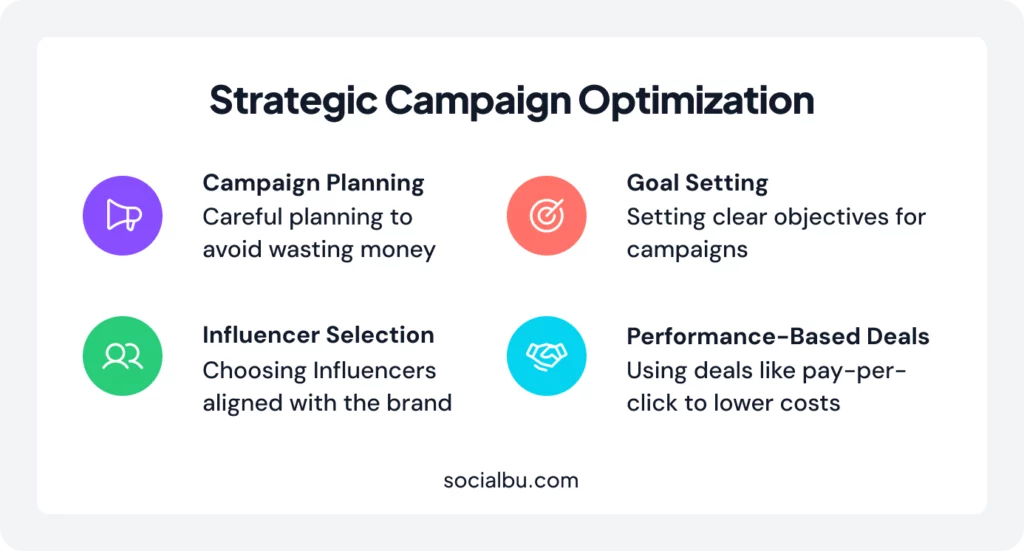
Once you understand how to measure ROI, the next step is to maximize influencer campaign results.
Here are practical ways to maximize the effectiveness of your campaigns.
1. Multi-Platform Amplification & Automation
Posting on multiple platforms increases your campaign’s reach. Micro-influencers might excel on Instagram, while macro-influencers dominate YouTube. Each platform attracts different audiences, so tailoring your content to suit each one boosts engagement and results.
But managing all of this manually? That’s where it gets time-consuming.
Already thinking this could save you hours? Start your free trial with SocialBu now and automate content right away!
2. Choose the Right Influencers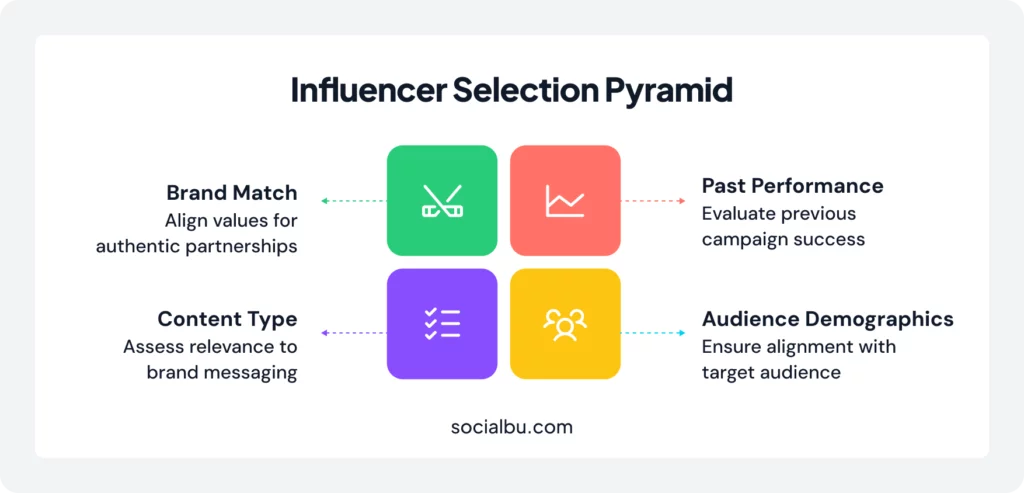
Picking the right influencers is key to maximizing influencer returns. Micro-influencers often have higher engagement rates, while macro-influencers offer broader reach. Check their audience demographics and past influencer performance measurement to ensure a good fit.
Also, review the type of content they create and how their audience interacts with it. A strong brand-influencer match leads to more authentic partnerships and better campaign outcomes.
3. Campaign Management & Workflow Optimization
Plan your campaigns carefully to avoid wasting money. Set clear goals (e.g., sales, awareness) and choose influencers who align with your brand.
Use performance-based deals, like paying per click or sale, to keep the cost-per-acquisition low.
4. Repurpose Content for Greater Reach
Influencer content doesn’t have to be used just once. Turn a single post into stories, reels, or ads to lower the cost per engagement influencer. For example, a TikTok video can be shared on Instagram or YouTube Shorts.
Not to mention, SocialBu enables you to repurpose and post content across platforms with just a few clicks.
How SocialBu Drives Influencer Marketing Results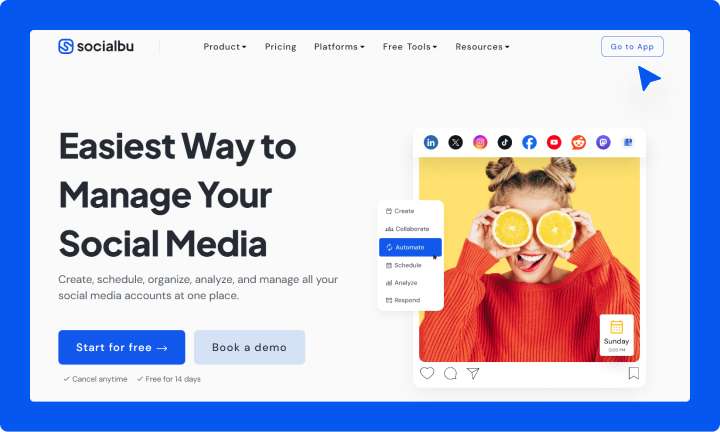
SocialBu is a powerful tool that makes influencer marketing easier and more effective for brands in 2025. It helps you manage campaigns, track influencer campaign metrics, and improve partnership ROI without any hassle.
Whether you’re running one campaign or more, SocialBu streamlines every step of your influencer marketing process.
Here’s How SocialBu Supercharges Your Influencer Marketing:
- Auto-Schedule Influencer Content: Post on Instagram, TikTok, and YouTube in advance for consistent delivery across platforms.
- Track Engagement and Conversions Automatically: Monitor clicks, comments, and campaign metrics in real time — without spreadsheets.
- Collaborate with Ease: Assign tasks, review drafts, and keep your whole team aligned with built-in workflows.
- Optimize with Powerful Analytics: View top-performing influencer posts, track ROI, and improve future campaigns with real data.
Conclusion
Influencer marketing is a powerful way to grow your brand in 2025, but only if you measure and optimize partnership ROI. By tracking influencer campaign metrics like engagement, reach, and conversions, you can see what works and where to improve. Calculating influencer ROI calculation is simple: tally costs, measure revenue or value, and apply the formula.
To get the most out of campaigns, use strategies like choosing the right influencers, repurposing content, and leveraging tools like SocialBu for automation and analytics.
With SocialBu, you can track cost per engagement influencer, manage workflows, and boost maximizing influencer returns.
Start using SocialBu today to level up your social media marketing and maximize your post engagements.
FAQs
How do you measure ROI from influencer campaigns?
To measure ROI, calculate your total campaign costs (influencer fees, ads, etc.) and the revenue or value generated (sales, leads, or brand awareness). Use the formula: [(Revenue – Cost) / Cost] x 100. Tools like SocialBu can automate this process.
What metrics matter most in influencer marketing?
Focus on engagement (likes, comments), reach (impressions, views), conversions (sales, sign-ups), and long-term metrics like follower growth. The right mix depends on your goals—awareness, engagement, or sales.
Can ROI be predicted ahead of a campaign?
It’s challenging to predict ROI precisely, but you can estimate it by examining past campaign data, influencer performance, and industry benchmarks. Tools like SocialBu can help you analyze trends to make smarter predictions.
How do you maximize influencer campaign performance?
Optimize workflows, repurpose content, amplify your message across platforms, and select influencers whose audiences align with your brand. Use SocialBu to manage and track campaigns can also enhance efficiency and yield better results.
